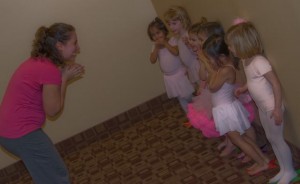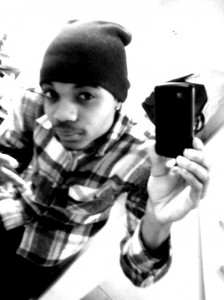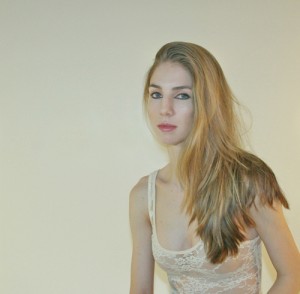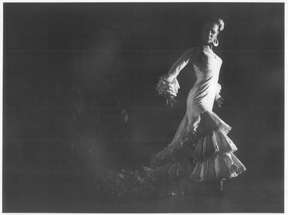1. Can you tell me your name, your location and a little about your dance background?
Well my name is Jazmine-Youmie Francois. I am originally from Haiti but I have been in the states since I was 5-6 years old. I am a Choreographer, Producer and Believer. I’ve been dancing all my life, but professionally for the last 4 years. I have been a teacher but I believe that I am a student at heart.
2. What is Concrete Dance Couture?
Concrete Dance Couture (CDC) is a site for the Choreographers, Dancers and Stylists who can’t catch the break they’ve been working so hard for. We’ve created a site for dancers whose spirits have been negatively pierced by agency rejections and unresponsive auditions. CDC provides our members with choice auditions in New York City, Los Angeles and other cities all over the United States. We offer legitimate agency listings, exclusive interviews from their favorite choreographers, dancers and celebrities.
We also offer designers and stylists a platform where their work can be seen. In addition, we offer valuable advice from industry insiders and continuous support to help their dreams of being a successful dancer/stylist become a reality.
3. How did the idea for CDC come about?
CDC began with a thought and a prayer. I wanted to provide hungry dancers and designers everywhere a site that focused on the talent and the person. As a dancer, I remembered how hard it was to find auditions to dance with a celebrity, on Broadway and amazing dance companies, but I didn’t want us to be an agency. I wanted us to be an intimate site that provided up and coming dancers with the opportunities that they are constantly searching for. So I asked God to lead and then I followed. I’m still following.
4. What are you currently doing with the site?
Right now CDC is focused on getting every up and coming dancer and stylists/designers out there an opportunity to be seen. We have great auditions/jobs listed for our members, then we post interviews with their favorite choreographers/celebrities. We have 2 sections titled, “Spotlight Dancer and “Wicked Choreography” where we provide sponsors, agencies and the world a chance to see that there are still ambitious dancers out there.
We also have the Reversible Beauty Blog where we focus on building everyone that comes through our site spirits. We understand how hard the industry is so our blog run by Claudine Jean-Mary (Clarity) focuses on spiritual restoration. We want our members to follow CDC’s motto in every area in their lives; Be Fearless, Be Relentless!
5. Can you explain who would benefit from joining and how they can sign on board?
Though CDC is a Dance site, we believe that most people that are entering the industry or are currently working in the industry can benefit from our site. Dancers and designers now have a site that focuses on them and their talent. Our site is very positive and intimate. We are in the business of helping others. Whether it’s finding auditions or helping you with insecurities. We are here to help. We want people to understand that the world is at their feet, not the other way around.
6. What is the cost of membership and what are the benefits?
The cost to become a member of Concrete Dance Couture is $15 dollars a month. We believe that this is very reasonable for struggling dancers everywhere. Members get access to over 100 auditions all over the United States, they get special discounts for special gatherings we have with today’s top choreographers and dancers. Members get to hear the truth about the dance community and are warned about the superficial side of it. In our page “The Industry & You” we have industry insiders and CDC staff answering our member’s biggest questions about the industry. They receive spiritual rejuvenation and support from us personally. Overall our members get educated, empowered and encouraged in every way to follow their dreams.
7. How do you choose your interview subjects?
I get asked that question a lot. It’s simple really. I believe that these people are brilliant and humble. I usually ask them and they say yes, I think that’s by the grace of God. The truth is, everyone that we have interviewed has been very kind and has given back to the dance community in some way. They have broken doors for hungry dancers, choreographers and designers. I wanted our members to hear them speak about their fears, what kept them motivated and their personal message to dancers everywhere.
8. What is it that you hope to accomplish through having this site?
I hope to help people’s dreams come true. I hope to have more people go after their dreams in a way the industry hasn’t seen before, but most of all I hope to have people everywhere spirits restored.
9. Is this your full-time gig or do you do other things as well?
This is currently my full time gig so you can imagine, I get no sleep (laughs) but I do have a lot of part time gigs. I seriously get no sleep.
10. What are the upcoming plans for the site?
I wish I could tell you. I take it day by day. This might sound weird but I do what God tells me to do. The one sure thing is that we have a couple of pieces of clothing coming out catered to dancers. Obviously we want to help dancers and designers everywhere but I don’t like to plan things too much. You can overwhelm yourself that way so I just let God lead and I follow, when he lets me know, you’ll know (laughs)!










